Kristine Hughes's Blog, page 147
June 8, 2011
From the Pen of Horace Walpole
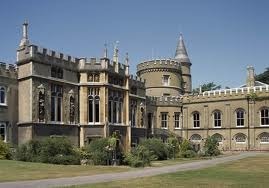 Walpole's home, Strawberry Hill
Walpole's home, Strawberry Hill
From Horace Walpole to the Miss Berrys.
Berkeley Square, June 8, 1791.
Your No. 34, that was interrupted, and of which the last date was of May 24th, I received on the 6th, and if I could find fault, it would be in the length; for I do not approve of your writing so much in hot weather, for, be it known to you ladies, that from the first of the month, June is not more June at Florence. My hay is crumbling away; and I have ordered it to be cut, as a sure way of bringing rain. I have a selfish reason, too, for remonstrating against long letters. I feel the season advancing, when mine will be piteous short; for what can I tell you from Twickenham in the next three or four months? Scandal from Richmond and Hampton Court, or robberies at my own door? The latter, indeed, are blown already. I went to Strawberry (Hill) on Saturday, to avoid the Birthday [4th June] crowd and squibs and crackers. At six I drove to Lord Stafford's, where his goods are to be sold by auction; his sister, Lady Anne [Conolly], intending to pull down the house and rebuild it. I returned a quarter before seven; and in the interim between my Gothic gate and Ashe's Nursery, a gentleman and gentlewoman, in a one-horse chair and in the broad face of the sun, had been robbed by a single highwayman, sans mask. Ashe's mother and sister stood and saw it; but havingno notion of a robbery at such an hour in the high-road, and before their men had left work, concluded it was an acquaintance of the robber's. I suppose Lady Cecilia Johnstone will not descend from her bedchamber to the drawing-room without life-guard men.
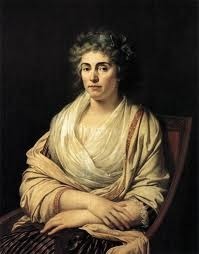 Madame d'Albany
Madame d'Albany
The Duke of Bedford eclipsed the whole birthday by his clothes, equipage, and servants: six of the latter walked on the side of the coach to keep off the crowd—or to tempt it; for their liveries were worth an argosie. The Prince [of Wales] was gorgeous too: the latter is to give Madame d'Albany (1) a dinner. She has been introduced to Mrs. Fitzherbert. You know I used to call Mrs. Cosway's concerts Charon's boat: now, methinks, London is so. I am glad Mrs. C.[osway] is with you; she is pleasing—but surely it is odd to drop a child and her husband and country all in a breath!
I am glad you are disfranchised of the exiles. We have several, I am told, here; but I strictly confine myself to those I knew formerly at Paris, and who all are quartered on Richmond-green. I went to them on Sunday evening, but found them gone to Lord Fitzwilliam's, the next house to Madame de Boufflers', to hear his organ; whither I followed them, and returned with them. The Comtesse Emilie played on her harp; then we all united at loto. I went home at twelve, unrobbed; and Lord Fitzwilliam, who asked much after you both, was to set out the next morning for Dublin, though intending to stay there but four days, and be back in three weeks.
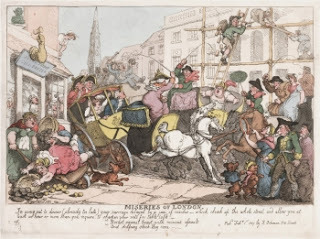
. . . . . The Duke of St. Albans has cut down all the brave old trees at Hanworth, and consequently reduced his park to what it issued from—Hounslow-heath: nay, he has hired a meadow next to mine, for the benefit of embarkation; and there lie all the good old corpses of oaks, ashes, and chestnuts, directly before your windows, and blocking up one of my views of the river but so impetuous is the rage for building, that his Grace's timber will, I trust, not annoy us long. There will soon be one street from London to Brentford; ay, and from London to every village ten miles round! Lord Camden has just let ground at Kentish Town for building fourteen hundred houses—nor do I wonder; London is, I am certain, much fuller than ever I saw it. I have twice this spring been going to stop my coach in Piccadilly, to inquire what was the matter, thinking there was a mob—not at all; it was only passengers. Nor is their any complaint of depopulation from the country: Bath shoots out into new crescents, circuses, and squares every year: Birmingham, Manchester, Hull, and Liverpool would serve any King in Europe for a capital, and would make the Empress of Russia's mouth water. Of the war with Catherine Slay-Czar I hear not a breath, and thence conjecture it is dozing into peace.
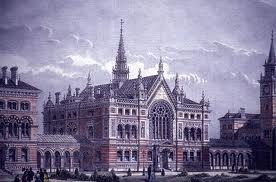 Dulwich College
Dulwich College
. . . . . This morning I went with Lysons the Reverend to see Dulwich College, founded in 1619 by Alleyn, a player, which I had never seen in my many days. We were received by a smart divine, tre bien poudri, and with black satin breeches—but they are giving new wings and red satin breeches to the good old hostel too, and destroying a gallery with a very rich ceiling; and nothing will remain of ancient but the front, and an hundred mouldy portraits, among apostles, sibyls, and Kings of England. On Sunday I shall settle at Strawberry; and then woe betide you on post-days! I cannot make news without straw. The Johnstones are going to Bath, for the healths of both; so Richmond will be my only staple. Adieu, all three!
1. Mme. d'Albany was the widow of Prince Charles Edward, who had died in 1788 in Italy. She was presented at Court, and was graciously received by the Queen. She was generally believed to be married to the great Italian tragic poet, Alfieri. Since her husband's death she had been living in Paris, but had now fled to England for safety.
[image error]
 Walpole's home, Strawberry Hill
Walpole's home, Strawberry Hill From Horace Walpole to the Miss Berrys.
Berkeley Square, June 8, 1791.
Your No. 34, that was interrupted, and of which the last date was of May 24th, I received on the 6th, and if I could find fault, it would be in the length; for I do not approve of your writing so much in hot weather, for, be it known to you ladies, that from the first of the month, June is not more June at Florence. My hay is crumbling away; and I have ordered it to be cut, as a sure way of bringing rain. I have a selfish reason, too, for remonstrating against long letters. I feel the season advancing, when mine will be piteous short; for what can I tell you from Twickenham in the next three or four months? Scandal from Richmond and Hampton Court, or robberies at my own door? The latter, indeed, are blown already. I went to Strawberry (Hill) on Saturday, to avoid the Birthday [4th June] crowd and squibs and crackers. At six I drove to Lord Stafford's, where his goods are to be sold by auction; his sister, Lady Anne [Conolly], intending to pull down the house and rebuild it. I returned a quarter before seven; and in the interim between my Gothic gate and Ashe's Nursery, a gentleman and gentlewoman, in a one-horse chair and in the broad face of the sun, had been robbed by a single highwayman, sans mask. Ashe's mother and sister stood and saw it; but havingno notion of a robbery at such an hour in the high-road, and before their men had left work, concluded it was an acquaintance of the robber's. I suppose Lady Cecilia Johnstone will not descend from her bedchamber to the drawing-room without life-guard men.
 Madame d'Albany
Madame d'AlbanyThe Duke of Bedford eclipsed the whole birthday by his clothes, equipage, and servants: six of the latter walked on the side of the coach to keep off the crowd—or to tempt it; for their liveries were worth an argosie. The Prince [of Wales] was gorgeous too: the latter is to give Madame d'Albany (1) a dinner. She has been introduced to Mrs. Fitzherbert. You know I used to call Mrs. Cosway's concerts Charon's boat: now, methinks, London is so. I am glad Mrs. C.[osway] is with you; she is pleasing—but surely it is odd to drop a child and her husband and country all in a breath!
I am glad you are disfranchised of the exiles. We have several, I am told, here; but I strictly confine myself to those I knew formerly at Paris, and who all are quartered on Richmond-green. I went to them on Sunday evening, but found them gone to Lord Fitzwilliam's, the next house to Madame de Boufflers', to hear his organ; whither I followed them, and returned with them. The Comtesse Emilie played on her harp; then we all united at loto. I went home at twelve, unrobbed; and Lord Fitzwilliam, who asked much after you both, was to set out the next morning for Dublin, though intending to stay there but four days, and be back in three weeks.

. . . . . The Duke of St. Albans has cut down all the brave old trees at Hanworth, and consequently reduced his park to what it issued from—Hounslow-heath: nay, he has hired a meadow next to mine, for the benefit of embarkation; and there lie all the good old corpses of oaks, ashes, and chestnuts, directly before your windows, and blocking up one of my views of the river but so impetuous is the rage for building, that his Grace's timber will, I trust, not annoy us long. There will soon be one street from London to Brentford; ay, and from London to every village ten miles round! Lord Camden has just let ground at Kentish Town for building fourteen hundred houses—nor do I wonder; London is, I am certain, much fuller than ever I saw it. I have twice this spring been going to stop my coach in Piccadilly, to inquire what was the matter, thinking there was a mob—not at all; it was only passengers. Nor is their any complaint of depopulation from the country: Bath shoots out into new crescents, circuses, and squares every year: Birmingham, Manchester, Hull, and Liverpool would serve any King in Europe for a capital, and would make the Empress of Russia's mouth water. Of the war with Catherine Slay-Czar I hear not a breath, and thence conjecture it is dozing into peace.
 Dulwich College
Dulwich College. . . . . This morning I went with Lysons the Reverend to see Dulwich College, founded in 1619 by Alleyn, a player, which I had never seen in my many days. We were received by a smart divine, tre bien poudri, and with black satin breeches—but they are giving new wings and red satin breeches to the good old hostel too, and destroying a gallery with a very rich ceiling; and nothing will remain of ancient but the front, and an hundred mouldy portraits, among apostles, sibyls, and Kings of England. On Sunday I shall settle at Strawberry; and then woe betide you on post-days! I cannot make news without straw. The Johnstones are going to Bath, for the healths of both; so Richmond will be my only staple. Adieu, all three!
1. Mme. d'Albany was the widow of Prince Charles Edward, who had died in 1788 in Italy. She was presented at Court, and was graciously received by the Queen. She was generally believed to be married to the great Italian tragic poet, Alfieri. Since her husband's death she had been living in Paris, but had now fled to England for safety.
[image error]
Published on June 08, 2011 00:56
June 7, 2011
Riding in Rotten Row - 2011
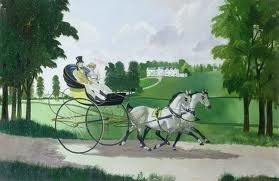
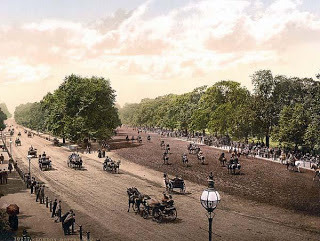 copyright oldpicture.comWhen I was booking my New Year's Eve trip to England this past January, I searched high and low for a company that offered carriage drives through the London parks, a la New York's Central Park. There are none. What with the state of London traffic, one can hardly blame them. And no doubt there are at least 37 laws currently on the books against the practice. But what a pity that the City once known for it's fashionable promenades through the centuries should have let this tradition disappear altogether. Fashionables, fops and fair ladies with fine figures (not to mention splendidly attired servants) are now but distant ghosts. Phaetons have fallen by the wayside and Gunter's is gone. Oh, the humanity!
copyright oldpicture.comWhen I was booking my New Year's Eve trip to England this past January, I searched high and low for a company that offered carriage drives through the London parks, a la New York's Central Park. There are none. What with the state of London traffic, one can hardly blame them. And no doubt there are at least 37 laws currently on the books against the practice. But what a pity that the City once known for it's fashionable promenades through the centuries should have let this tradition disappear altogether. Fashionables, fops and fair ladies with fine figures (not to mention splendidly attired servants) are now but distant ghosts. Phaetons have fallen by the wayside and Gunter's is gone. Oh, the humanity!However, a very last vestige of London's equine past can yet be found at Hyde Park Stables, Bathurst Mews, W2, housed in an authentic mews used for stabling horses. Here, at least, not much has changed through the centuries. Although I don't think they buy their horses from Tattersalls. No matter, the horses and ponies from Hyde Park Stables are well-known for their calm temperament and you'll be escorted around the five miles of bridleways across Hyde Park so there's no fear of getting lost.
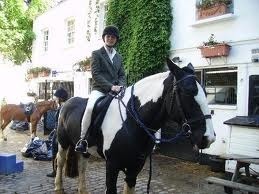
"There have been horses here continually since 1835, aside from just two years in the Second World War when the building was used for motor vehicles," says Catherine Brown, manager of Hyde Park Stables. "Mews are not very spacious but we've fitted air conditioning and rubber flooring for the horses. . . people are amazed there are still horses in an area like this. They just expect homes."
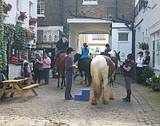 Hyde Park Stables London
Hyde Park Stables London © Laura Porter, licensed to About.com, Inc.
Cost is about $115 per hour, helmets and boots provided. One drawback, no cantering allowed. A trot is all you'll be allowed unless you pre-book an hour lesson in order to have your riding skills assessed.
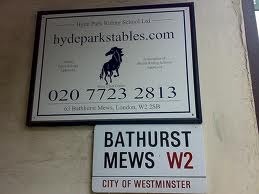
One can only wonder at what Count d'Orsay must be thinking of this turn of events.[image error]
Published on June 07, 2011 00:11
June 6, 2011
The View from Downshire Hill
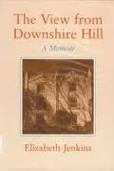 Through the courtesy of Hester Davenport and Jo Manning, I have read the little book of memoirs published by the late Elizabeth Jenkins (1905-2010), The View from Downshire Hill, a collection of reminiscences and vignettes of some fascinating personalities. Miss Jenkins published many novels, biographies, wrote for the BBC, and was one of the founders of the Jane Austen Society. As a matter of fact, she was the last of the original group who first organized to save the cottage in Chawton, Hampshire, where Jane Austen lived from 1809 to just before her death in 1817. It was saved, and the society has grown and flourished, a model for many more Austen societies in North America, Australia and elsewhere.
Through the courtesy of Hester Davenport and Jo Manning, I have read the little book of memoirs published by the late Elizabeth Jenkins (1905-2010), The View from Downshire Hill, a collection of reminiscences and vignettes of some fascinating personalities. Miss Jenkins published many novels, biographies, wrote for the BBC, and was one of the founders of the Jane Austen Society. As a matter of fact, she was the last of the original group who first organized to save the cottage in Chawton, Hampshire, where Jane Austen lived from 1809 to just before her death in 1817. It was saved, and the society has grown and flourished, a model for many more Austen societies in North America, Australia and elsewhere.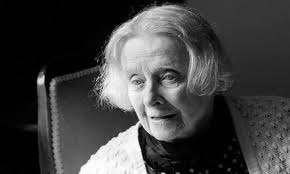 Elizabeth Jenkins was born on October 31, 1905, Hitchin, Hertfordshire, and died ast the age of 104 last September. She studied at Newham College, Cambridge, beginning in 1924. Through the head of her college, Pernel Strachey (Lytton Strachey's sister), Jenkins met Virginia Woolf. After Cambridge, Jenkins settled in Bloomsbury, London, and worked on her first novel. She was invited to visit Mrs. Woolf and her huband, Leonard, a visit repeated many times.
Elizabeth Jenkins was born on October 31, 1905, Hitchin, Hertfordshire, and died ast the age of 104 last September. She studied at Newham College, Cambridge, beginning in 1924. Through the head of her college, Pernel Strachey (Lytton Strachey's sister), Jenkins met Virginia Woolf. After Cambridge, Jenkins settled in Bloomsbury, London, and worked on her first novel. She was invited to visit Mrs. Woolf and her huband, Leonard, a visit repeated many times. 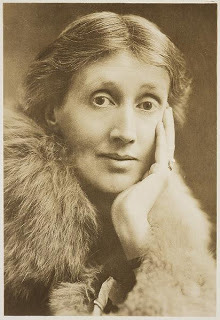 Jenkins found Virginia as fascinating as we imagine she must have been. To quote the Telegraph's obituary, published 6 September, 2010, Jenkins "found the famous writer 'very beautiful' and the 'ineffably distinguished' company 'enough to take one's breath away'. But after a few months she found herself frozen out of conversation, or addressed in 'contemptuous and mocking' tones. Scorned, she did not seek to meet Woolf again, even after the Bloomsbury figurehead subsequently inquired after her and described Virginia Water (1928) as 'a sweet white grape of a book'.
Jenkins found Virginia as fascinating as we imagine she must have been. To quote the Telegraph's obituary, published 6 September, 2010, Jenkins "found the famous writer 'very beautiful' and the 'ineffably distinguished' company 'enough to take one's breath away'. But after a few months she found herself frozen out of conversation, or addressed in 'contemptuous and mocking' tones. Scorned, she did not seek to meet Woolf again, even after the Bloomsbury figurehead subsequently inquired after her and described Virginia Water (1928) as 'a sweet white grape of a book'. 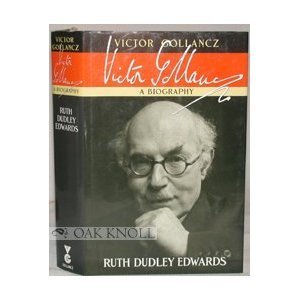 Jenkins' first novel was published by the first publisher she contacted, the famous Victor Gollancz who himself was a leading literary figure in the London of pre- and post World War II. Of course this is the kind of situation, the lack of any rejection, that stirs some of us to great envy. But even with considerable literary success, Elizabeth Jenkins had many boring and unfulfilling jobs in dull offices. Nevertheless she never stopped writing. And publishing. Gollancz (1893-1967) also published Ford Madox Ford and George Orwell, among others. He was knighted in 1965.
Jenkins' first novel was published by the first publisher she contacted, the famous Victor Gollancz who himself was a leading literary figure in the London of pre- and post World War II. Of course this is the kind of situation, the lack of any rejection, that stirs some of us to great envy. But even with considerable literary success, Elizabeth Jenkins had many boring and unfulfilling jobs in dull offices. Nevertheless she never stopped writing. And publishing. Gollancz (1893-1967) also published Ford Madox Ford and George Orwell, among others. He was knighted in 1965.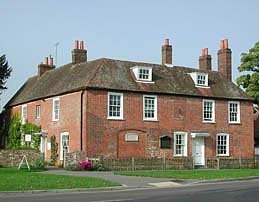 In addition to novels, Jenkins wrote many biographies, the first being of Lady Caroline Lamb, a wild young woman whose shocking behavior with Lord Byron and whose society connections in regency England made her a perfect subject for a life story. Jenkins followed this work with a still-admired biography of Jane Austen in 1938. Two years later, she was a co-founder of the Jane Austen Society, as mentioned above. Today, the rescued cottage is known as Jane Austen's House Museum and has an excellent website.
In addition to novels, Jenkins wrote many biographies, the first being of Lady Caroline Lamb, a wild young woman whose shocking behavior with Lord Byron and whose society connections in regency England made her a perfect subject for a life story. Jenkins followed this work with a still-admired biography of Jane Austen in 1938. Two years later, she was a co-founder of the Jane Austen Society, as mentioned above. Today, the rescued cottage is known as Jane Austen's House Museum and has an excellent website.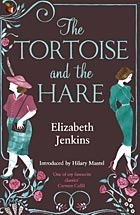 Probably the most admired novel by Jenkins is The Tortoise and the Hare. The Telegraph wrote, "...tales of human intrigue were to recur throughout Elizabeth Jenkins's fiction, notably in her best-known novel, The Tortoise and the Hare (1954), about the gradual collapse of an apparently perfect marriage. The title refers to the two women competing for the affections of a wealthy barrister, Evelyn. His beautiful wife, Imogen, seems to have little to fear from a stout, capable neighbour, Blanche. But as her own insecurities overwhelm her, Imogen can only watch as Blanche's dull charms win the day. Like her other works, The Tortoise and the Hare relied on Elizabeth Jenkins's subtle portrayal of complex human relationships. By the end of the book, the author makes it clear that though Imogen is suffering, she has collaborated fully in own her pain. "
Probably the most admired novel by Jenkins is The Tortoise and the Hare. The Telegraph wrote, "...tales of human intrigue were to recur throughout Elizabeth Jenkins's fiction, notably in her best-known novel, The Tortoise and the Hare (1954), about the gradual collapse of an apparently perfect marriage. The title refers to the two women competing for the affections of a wealthy barrister, Evelyn. His beautiful wife, Imogen, seems to have little to fear from a stout, capable neighbour, Blanche. But as her own insecurities overwhelm her, Imogen can only watch as Blanche's dull charms win the day. Like her other works, The Tortoise and the Hare relied on Elizabeth Jenkins's subtle portrayal of complex human relationships. By the end of the book, the author makes it clear that though Imogen is suffering, she has collaborated fully in own her pain. "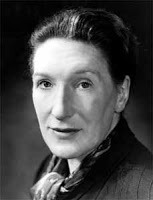 Another great author and friend of Jenkins was Elizabeth Bowen, whose novels and short stories are admired. I have to admit I have not read many of them, but I have alsways wanted to add them to my TBR pile, along with Elizabeth Jenkins' novels and nonfiction.
Another great author and friend of Jenkins was Elizabeth Bowen, whose novels and short stories are admired. I have to admit I have not read many of them, but I have alsways wanted to add them to my TBR pile, along with Elizabeth Jenkins' novels and nonfiction. Though I am eager to read more of Elizabeth Jenkins' life, we are fortunate indeed to have this fine book, The View from Downshire House, random recollections which really whet our appetites. In fact, I can quote Jane Austen's Emma: "It was a delightful visit – perfect, in being much too short."
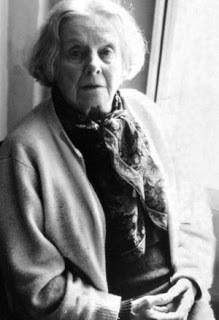 Elizabeth Jenkins 1905-2010
Elizabeth Jenkins 1905-2010I feel sure that Elizabeth Jenkins would have liked the headline on her New York Times obituary: "Woman of Letters."
[image error]
Published on June 06, 2011 00:00
June 4, 2011
Suffragette Killed by King's Horse at Derby 4 June 1913
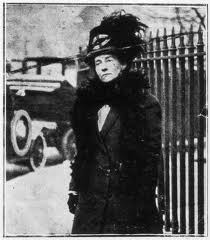 Emily Davison
Emily Davison
From The Times, 5 June 1913, Page 9 -
"The desperate act of a woman who rushed from the rails on to the course as the horses swept round Tattenham Corner, apparently from some mad notion that she could spoil the race, will impress the general public even more, perhaps, than the disqualification of the winner. She did not interfere with the race, but she nearly killed a jockey as well as herself, and she brought down a valuable horse. She seems to have run right in front of Anmer, which JONES was riding for the KING. It was impossible to avoid her. She was ridden down, the horse turned a complete somersault and fell upon his rider. That the horse was the KING'S was doubtless an accident: it would need almost miraculous skill or fortune to single out any particular animal as they passed a particular point. Some of the spectators close to the woman supposed that she was under the impression that the horses had all gone by and that she was merely attempting to cross the course. The evidence, however, is strong that her action was deliberate, and that it was planned and executed in the supposed interests of the suffragist movement.
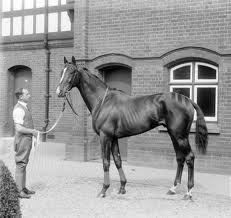
"Whether she intended to commit suicide, or was simply reckless, it is hard to surmise. She very nearly took JONES'S life and her own. Had Anmer brought down the other horses which were close behind him, a scene might have followed of which it is horrible even to think, and nobody could have maintained, had it occurred, that it was not a natural consequence of what she did. She is said to be a person well known in the suffragist movement, to have had a card of a suffragist association upon her, and to have had the so-called "Suffragist colours" tied around her waist. It is further alleged that just after she had run out in front of the horses, holding her hands above her head, a placard with the words "Votes for Women" was raised by some person in the crowd. The circumstances are not, of course, conclusive, but they are, to say the least, suggestive.
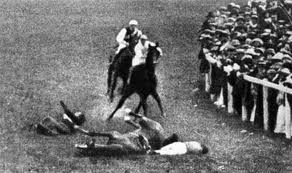
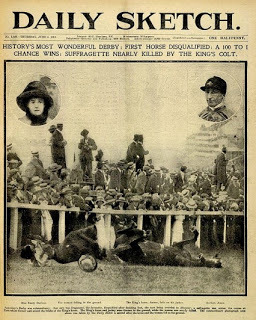
"The case will, of course, become the subject of investigation by the police, and we may possibly learn from the offender herself what exactly she intended to do and how she fancied that it could assist the suffragist cause. A deed of the kind, we need hardly say, is not likely to increase the popularity of any cause with the ordinary public. Reckless fanaticism is not regarded by them as a qualification for the franchise. They are disposed to look upon manifestations of that temper with contempt and with disgust. When these manifestations are attended by indifference to human life, they begin to suspect that they are not altogether sane. They say that persons who want only destroy property and endanger innocent lives must be either desperately wicked or entirely unbalanced. Where women are concerned, the natural gallantry of the public always inclines them to take a favourable view, and accordingly they are gradually coming to the conclusion that many of the militant suffragists are not entirely responsible for their acts. The growth of that belief will not improve the prospects of woman suffrage. The bulk of the suffragist party, and the abler of its leaders, are doubtless conscious of this truth. They seem, however, to be quite unable to lay the spirit which some of them have helped to raise, and to prevent the perpetration of crimes, the utter inanity of which as a means of political propaganda is even more striking than their wickedness. We are much mistaken if yesterday's exhibition does not do more hurt to the cause of woman suffrage than years of agitation can undo. The militant school will long have reason to remember Aboyeur's Derby."
A video explaining the history of this particular race and footage of the accident itself can be viewed here.
Emily never regained consciousness and died from her injuries on June 8th at Epsom Cottage Hospital. Doubts remain as to her exact intentions on the fateful day, some saying it was suicide, others disputing that theory as she had a return train ticket in her pocket.
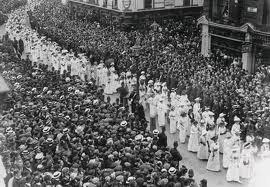
On June 13, 5,000 women marched in Davison's funeral procession. Video of the event can be seen here.
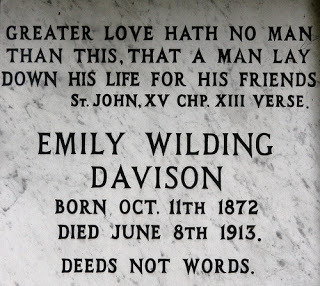
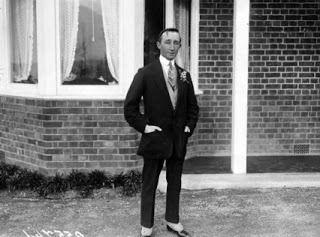
The King's jockey, Herbert Jones (b. 1880), was known as 'Diamond' Jones after winning the racing triple crown in 1900 when he rode the future King Edward VII's horse, 'Diamond Jubilee.' Jones suffered a mild concussion in the accident and recovered. He died in his kitchen of gas inhalation in 1951.
The horse involved in the incident, Anmer, went on to race again, always placing and never winning and one presumes he went on to a peaceful retirement.
[image error]
 Emily Davison
Emily Davison From The Times, 5 June 1913, Page 9 -
"The desperate act of a woman who rushed from the rails on to the course as the horses swept round Tattenham Corner, apparently from some mad notion that she could spoil the race, will impress the general public even more, perhaps, than the disqualification of the winner. She did not interfere with the race, but she nearly killed a jockey as well as herself, and she brought down a valuable horse. She seems to have run right in front of Anmer, which JONES was riding for the KING. It was impossible to avoid her. She was ridden down, the horse turned a complete somersault and fell upon his rider. That the horse was the KING'S was doubtless an accident: it would need almost miraculous skill or fortune to single out any particular animal as they passed a particular point. Some of the spectators close to the woman supposed that she was under the impression that the horses had all gone by and that she was merely attempting to cross the course. The evidence, however, is strong that her action was deliberate, and that it was planned and executed in the supposed interests of the suffragist movement.

"Whether she intended to commit suicide, or was simply reckless, it is hard to surmise. She very nearly took JONES'S life and her own. Had Anmer brought down the other horses which were close behind him, a scene might have followed of which it is horrible even to think, and nobody could have maintained, had it occurred, that it was not a natural consequence of what she did. She is said to be a person well known in the suffragist movement, to have had a card of a suffragist association upon her, and to have had the so-called "Suffragist colours" tied around her waist. It is further alleged that just after she had run out in front of the horses, holding her hands above her head, a placard with the words "Votes for Women" was raised by some person in the crowd. The circumstances are not, of course, conclusive, but they are, to say the least, suggestive.


"The case will, of course, become the subject of investigation by the police, and we may possibly learn from the offender herself what exactly she intended to do and how she fancied that it could assist the suffragist cause. A deed of the kind, we need hardly say, is not likely to increase the popularity of any cause with the ordinary public. Reckless fanaticism is not regarded by them as a qualification for the franchise. They are disposed to look upon manifestations of that temper with contempt and with disgust. When these manifestations are attended by indifference to human life, they begin to suspect that they are not altogether sane. They say that persons who want only destroy property and endanger innocent lives must be either desperately wicked or entirely unbalanced. Where women are concerned, the natural gallantry of the public always inclines them to take a favourable view, and accordingly they are gradually coming to the conclusion that many of the militant suffragists are not entirely responsible for their acts. The growth of that belief will not improve the prospects of woman suffrage. The bulk of the suffragist party, and the abler of its leaders, are doubtless conscious of this truth. They seem, however, to be quite unable to lay the spirit which some of them have helped to raise, and to prevent the perpetration of crimes, the utter inanity of which as a means of political propaganda is even more striking than their wickedness. We are much mistaken if yesterday's exhibition does not do more hurt to the cause of woman suffrage than years of agitation can undo. The militant school will long have reason to remember Aboyeur's Derby."
A video explaining the history of this particular race and footage of the accident itself can be viewed here.
Emily never regained consciousness and died from her injuries on June 8th at Epsom Cottage Hospital. Doubts remain as to her exact intentions on the fateful day, some saying it was suicide, others disputing that theory as she had a return train ticket in her pocket.

On June 13, 5,000 women marched in Davison's funeral procession. Video of the event can be seen here.


The King's jockey, Herbert Jones (b. 1880), was known as 'Diamond' Jones after winning the racing triple crown in 1900 when he rode the future King Edward VII's horse, 'Diamond Jubilee.' Jones suffered a mild concussion in the accident and recovered. He died in his kitchen of gas inhalation in 1951.
The horse involved in the incident, Anmer, went on to race again, always placing and never winning and one presumes he went on to a peaceful retirement.
[image error]
Published on June 04, 2011 02:42
June 3, 2011
Fun with Sense and Sensibility
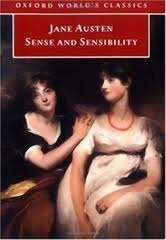 Victoria here. At a meeting of our Jane Austen Book Group, re-reading Sense and Sensibility, we tried a new technique. Since all of us had read the book many times, MANY times, we decided to forego a general discussion and have each member share her favorite passage. Austen lovers probably won't be surprised that several of us chose similar passages.
Victoria here. At a meeting of our Jane Austen Book Group, re-reading Sense and Sensibility, we tried a new technique. Since all of us had read the book many times, MANY times, we decided to forego a general discussion and have each member share her favorite passage. Austen lovers probably won't be surprised that several of us chose similar passages.The excerpt that at least five or six chose appears in volume I, chapter 2. Fanny Dashwood talks her husband, John Dashwood, out of fulfilling his deathbed promise to his father to take care of his step-mother and three half-sisters (Elinor, Marianne and Margaret).
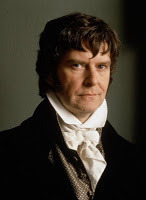 At first John Daswood decides to give them three thousand pounds, but Fanny is able to shave this down to an occasional gift of game from the Norland estate. This scene was beautifully scripted by Emma Thompson and acted by Harriet Walter and James Fleet in the 1995 film version of the novel. But we concentrated on the written word.
At first John Daswood decides to give them three thousand pounds, but Fanny is able to shave this down to an occasional gift of game from the Norland estate. This scene was beautifully scripted by Emma Thompson and acted by Harriet Walter and James Fleet in the 1995 film version of the novel. But we concentrated on the written word. At one point, John D. considers giving his mother an annuity, an annual payment. Here is the specific sentence that captivates lovers of Austen's dry wit. Fanny points out, "People always live forever when there is an annuity to be paid them."
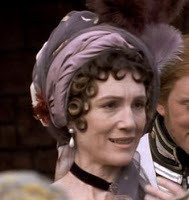
Though she, her husband and her son are turning the Dashwood ladies out of their comfortable estate of Norland and allowing them to move to a smaller cottage several counties away, Fanny resents their retention of some of the china and silver. And, to justify her parsimonious view, she says, "Their housekeeping will be (cost) nothing at all -- they will have no carriage, no horses, hardly any servants and will keep no company. Only conceive how comfortable they will be!"
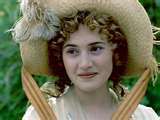 KateWinslet as MarianneWhen Marianne is saying goodby to her home, the Norland estate (I, 6), she emotes upon the house -- and the trees. "Dear, dear Norland...perhaps I may view you no more! And you, ye well-known trees!...No, you will continue the same: unconscious of the pleasure or the regret you occasion and insensible of any change in those who walk under your shade! But who will remain to enjoy you?" typically, Marianne is overly emotional. Several chapters later (I,16), Marianne notices the autumn leaves and recalls Norland with fondness.
KateWinslet as MarianneWhen Marianne is saying goodby to her home, the Norland estate (I, 6), she emotes upon the house -- and the trees. "Dear, dear Norland...perhaps I may view you no more! And you, ye well-known trees!...No, you will continue the same: unconscious of the pleasure or the regret you occasion and insensible of any change in those who walk under your shade! But who will remain to enjoy you?" typically, Marianne is overly emotional. Several chapters later (I,16), Marianne notices the autumn leaves and recalls Norland with fondness."Dear, dear Norland," said Elinor, "probably looks much as it always does at this time of year. The woods and walks thickly covered with dead leaves."
 "Oh," cried Marianne, "with what transporting sensations have I formerly seen them fall!...Now there is no one to regard them. They are seen only as a nuisance, swept hastily off, and driven as much as possible from the sight."
"Oh," cried Marianne, "with what transporting sensations have I formerly seen them fall!...Now there is no one to regard them. They are seen only as a nuisance, swept hastily off, and driven as much as possible from the sight.""It is not everyone," said Elinor, "who has your passion for dead leaves."
 Hugh Laurie as Mr PalmerMy personal favorite passage is another that involves some of Austen's wonderful minor characters who give such richness to her novels. Mr. and Mrs. Palmer, the sister and brother in law of Lady Middleton -- and daughter and son in law of Mrs Jennings -- provide many moments of delightful comic relief. In I, 20, Elinor, observing Mr Palmer's usual ill-humor, thinks: "His temper might perhaps be a little soured by finding, like many others of his sex, that through some unaccountable bias in favour of beauty, he was the husband of a very silly woman; but she knew that this kind of blunder was too common for any sensible man to be lastingly hurt by it."
Hugh Laurie as Mr PalmerMy personal favorite passage is another that involves some of Austen's wonderful minor characters who give such richness to her novels. Mr. and Mrs. Palmer, the sister and brother in law of Lady Middleton -- and daughter and son in law of Mrs Jennings -- provide many moments of delightful comic relief. In I, 20, Elinor, observing Mr Palmer's usual ill-humor, thinks: "His temper might perhaps be a little soured by finding, like many others of his sex, that through some unaccountable bias in favour of beauty, he was the husband of a very silly woman; but she knew that this kind of blunder was too common for any sensible man to be lastingly hurt by it."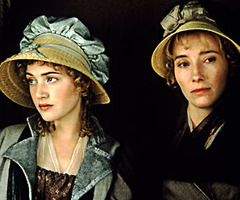 Winslet (l) and Emma Thompson as ElinorAnother favorite scene is the discovery (III,1 aka 37) by the emotional Marianne that Elinor had been keeping secret the fact of Edward Ferrars' engagement to Lucy Steele. Marianne berates herself for her self-indulgent outbursts...and then wonders how Elinor could have been so calm instead of giving in to her sorrow. Several passages are cited to show Marianne's regrets and Elinor's disappointment, and underline the contrasts in their two personalities.
Winslet (l) and Emma Thompson as ElinorAnother favorite scene is the discovery (III,1 aka 37) by the emotional Marianne that Elinor had been keeping secret the fact of Edward Ferrars' engagement to Lucy Steele. Marianne berates herself for her self-indulgent outbursts...and then wonders how Elinor could have been so calm instead of giving in to her sorrow. Several passages are cited to show Marianne's regrets and Elinor's disappointment, and underline the contrasts in their two personalities.All of us at our Jane Austen Book Group agreed that Sense and Sensibility deserves its two hundred years of admiration. Jane, we decided, would be pleased.

The JASNA AGM on the 200th anniversary of the publication of Jane Austen's first novel will be held in Ft. Worth, Texas, October 14-16, 2011, at the Renaissance Worthington Hotel.
Hope to see you there!!
Published on June 03, 2011 00:18
June 2, 2011
Another Look at Lord Alvanley
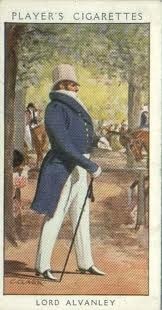
We first introduced you to Lord Alvanley in a previous post on this blog and thought it was time that we encountered him once again.
William Arden, 2nd Baron Alvanley (8 January 1789 – 16 November 1849) was the son of Richard Arden, 1st Baron Alvanley. He was an officer in the Coldstream Guards, attaining the rank of Captain in the service of the 50th Regiment of Foot. In 1835, Alvanley fought a duel with Morgan O'Connell. According to a near contemporary report "[Alvanley] went through the business with the most perfect sang froid, but on his way to the field he whimsically intimated a singular alarm. Having descended a hollow, 'My Lord', said he to his second, 'you get me down well enough, but', alluding to his full size, 'should I fall, I do not know how the devil you will ever get me up again.'"
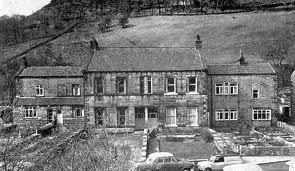 Underbank Hall
Underbank HallIt was to Alvanley that Brummell turned whilst in exile in France for help and for many years Alvanley regularly sent the Beau financial support. However, because of his spending habits, his family estates had to be sold to pay debts. Underbank Hall in Stockport was sold by auction in 1823, most of the Bredbury estate was sold in lots in 1825, the Arden Hall mansion in 1833. He was forced to dispose of his half-pay on 10 June 1826. He later served in the Forest Troop, King's Regiment of Cheshire Yeomanry Cavalry, as a cornet, but resigned on 17 January 1840. He did not marry and had no children. On his death, the title went to his only brother, the Hon. Colonel Richard Arden.
From The Letter-bag of Lady Elizabeth Spencer-Stanhope
"But a yet more celebrated leader of fashion mentioned by Mrs Stanhope as being present at the ball given by the Duchess of Bolton was Lord Alvanley. One of the accepted dandies in the same category as Lord Petersham, the Duke of Argyle, Lords Foley and Worcester, Beau Brummell and his great friend, Henry Pierrepont. Lord Alvanley had served with distinction in the army, and further enjoyed the reputation of being one of the wittiest men in Europe. Short and somewhat stout, with a small nose and florid cheeks usually adorned with a lavish sprinkling of snuff, like his rival Lord Petersham, he cultivated a lisp which accentuated the humour of his utterances. He also adopted much the same method of enhancing his value by indulging in certain peculiarities which, however inconvenient to his fellows, appear to have been accepted by them with surprising amiability. For instance, being fond of reading in bed, when he at length felt sleep overpowering him, he would extinguish his candle by the novel method of popping it alight under his bolster, or flinging it into the middle of the room and taking a shot at it with his pillow—but if the shot was unsuccessful, with a heavy sigh he left it to take its chance. So well known, indeed, was this little habit of Lord Alvanley, that hostesses who were anxious not to have their houses set on fire at midnight would depute a servant to watch in a neighbouring apartment till his lordship composed himself to sleep, a precaution which was invariably adopted by Mrs Stanhope when he paid his annual visit to Cannon Hall.
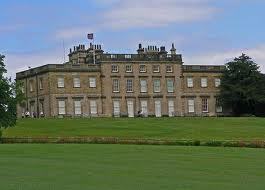 Cannon Hall"However, despite such minor failings, Lord Alvanley enjoyed a popularity seldom surpassed. To his other recommendations was added that of being a celebrated gourmet, and the excellence was proverbial of the little dinners which he gave in his house in Park Street, St James's, to which never more than eight friends were bidden, and at which there was an apricot tart on the sideboard all the year round. Moreover, although like Brummell and Sheridan, many a bon mot was fathered upon him to which he had never given utterance, yet his reputation as a wit was well deserved, and at a date when both the dandies and the fine ladies prided themselves upon their undisguised insolence, Lord Alvanley remained a shining example of good-nature, so that, save, perhaps, in one instance recorded in this book, his wit never offended."
Cannon Hall"However, despite such minor failings, Lord Alvanley enjoyed a popularity seldom surpassed. To his other recommendations was added that of being a celebrated gourmet, and the excellence was proverbial of the little dinners which he gave in his house in Park Street, St James's, to which never more than eight friends were bidden, and at which there was an apricot tart on the sideboard all the year round. Moreover, although like Brummell and Sheridan, many a bon mot was fathered upon him to which he had never given utterance, yet his reputation as a wit was well deserved, and at a date when both the dandies and the fine ladies prided themselves upon their undisguised insolence, Lord Alvanley remained a shining example of good-nature, so that, save, perhaps, in one instance recorded in this book, his wit never offended."Coming soon - An account of Waterloo by Lord Alvanley's sister, the Hon. Katharine Arden.
Published on June 02, 2011 00:13
June 1, 2011
The Wellington Connection - Pubs
Today we're taking a look at some of the many, many, many pubs named after the Hero of Waterloo.
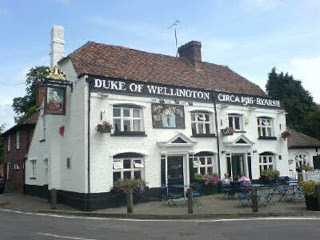
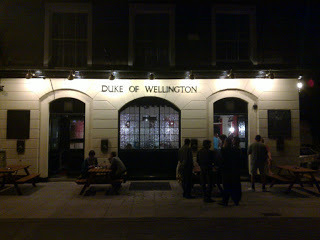
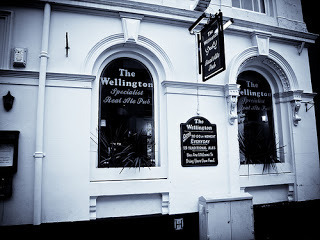
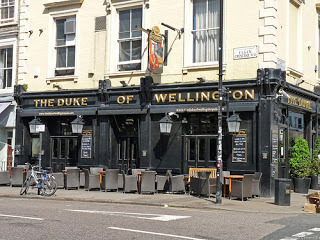
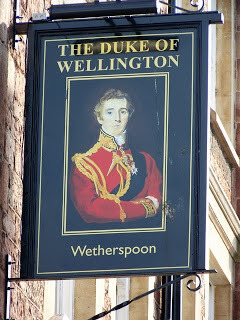
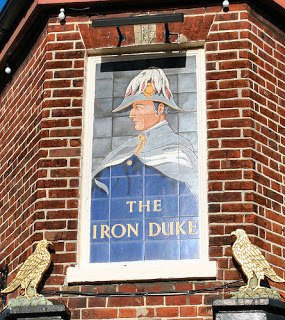
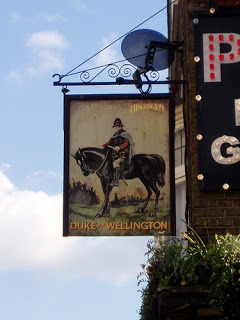
As far as I can make out, the Duke of Wellington was not widely known as a drinking man, so the large number of pubs named in his honour is amazing - almost as many as those named for the Duke of York who, I believe, was a drinking man. And the Marquess of Angelsey, who may not have been a lush, but was certainly a wife stealer - but that's another story. When in London, I heard tell of a man who has taken up the mission of visiting as many of the Duke of Wellington pubs across England as he can. He's going to be very old, and very drunk, by the time he's done. One of the prettiest Duke of Wellingtons I've seen is this one, though I've not personally visited it. Yet.
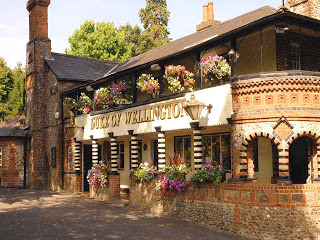
They're in Surrey - check out the website here.
Whilst I haven't made it my mission, I must admit that I've fallen upon, and entered, a few Wellington pubs myself, such as the one in Portobello Road that features this sign
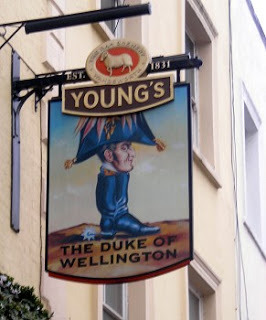
And Brooke and I visited the Wellington at Waterloo south of the River in June, which you can read about in at prior post. If you've been following this blog, you'll know that I fell upon yet another Wellington pub when in London recently, at the corner of Wellington Street and the Strand. Here's a bit from that post to refresh your memory -
"took a boat cruise on the River Thames then went to Ye Olde Cheshire Cheese in Fleet Street for dinner. It was closed until the 29th - and the cab had left. Fleet Street after business hours is desolate, to say the least. What to do? Well, I thought, I'll just carry on as if I know what the Hell I'm doing. "This way," I told Greg as I walked purposefully towards the Strand. Please God, I prayed, let there be somewhere's nice to eat. We passed The George pub - very old, very atmospheric, very closed. Xmas and the Bank Holiday are playing havoc with opening times. Right then, I told myself, keep marching. We fell upon Somerset House and went inside to watch the ice skaters. Then we walked another three blocks up the Strand when, off on the far right corner I saw something promising - lights were on, people were inside and it looked like a pub. It was a pub . . . The Duke of Wellington in Wellington Street. NO, I'm not kidding . . . saved by the Duke. Again. We had a pint in the bar and then went upstairs to the dining room, where we had a fantastic meal (lamb shank pie for me, steak for Greg) and warmed ourselves by the gas fire. The Duke of Wellington - I ask you, what were the odds!?"
Here are my personal photos of the pub, which don't measure up to those above, but you'll excuse me under the circumstances.
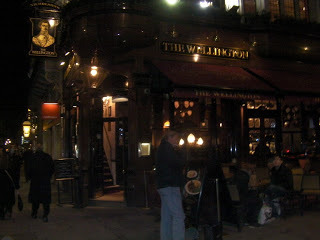
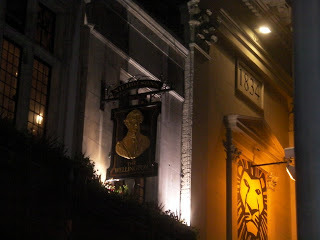
That's the logo for The Lion King just behind the Duke - the pub is next to the theatre where it's playing.
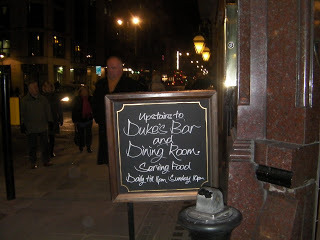
You can read a review of the pub here. To prove the point that one can, and often does, literally fall upon pubs named for the Duke of Wellington, I tripped over yet another whilst Greg and I were on a Rock and Roll walking tour.
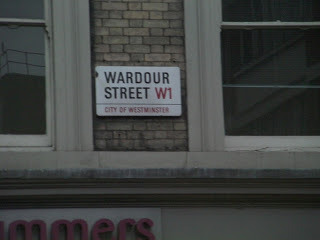
As we had to keep up with the tour guide, I didn't have the opportunity to peek inside.
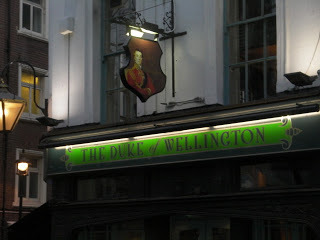
Which may be just as well, as I've come to learn that it's known for being a gay bar. The Duke of Wellington . . . . . I ask you . . . . couldn't they have changed the name to something a bit more appropriate?
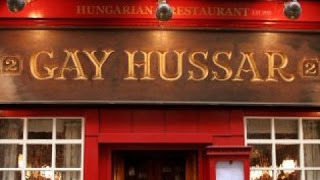








As far as I can make out, the Duke of Wellington was not widely known as a drinking man, so the large number of pubs named in his honour is amazing - almost as many as those named for the Duke of York who, I believe, was a drinking man. And the Marquess of Angelsey, who may not have been a lush, but was certainly a wife stealer - but that's another story. When in London, I heard tell of a man who has taken up the mission of visiting as many of the Duke of Wellington pubs across England as he can. He's going to be very old, and very drunk, by the time he's done. One of the prettiest Duke of Wellingtons I've seen is this one, though I've not personally visited it. Yet.

They're in Surrey - check out the website here.
Whilst I haven't made it my mission, I must admit that I've fallen upon, and entered, a few Wellington pubs myself, such as the one in Portobello Road that features this sign

And Brooke and I visited the Wellington at Waterloo south of the River in June, which you can read about in at prior post. If you've been following this blog, you'll know that I fell upon yet another Wellington pub when in London recently, at the corner of Wellington Street and the Strand. Here's a bit from that post to refresh your memory -
"took a boat cruise on the River Thames then went to Ye Olde Cheshire Cheese in Fleet Street for dinner. It was closed until the 29th - and the cab had left. Fleet Street after business hours is desolate, to say the least. What to do? Well, I thought, I'll just carry on as if I know what the Hell I'm doing. "This way," I told Greg as I walked purposefully towards the Strand. Please God, I prayed, let there be somewhere's nice to eat. We passed The George pub - very old, very atmospheric, very closed. Xmas and the Bank Holiday are playing havoc with opening times. Right then, I told myself, keep marching. We fell upon Somerset House and went inside to watch the ice skaters. Then we walked another three blocks up the Strand when, off on the far right corner I saw something promising - lights were on, people were inside and it looked like a pub. It was a pub . . . The Duke of Wellington in Wellington Street. NO, I'm not kidding . . . saved by the Duke. Again. We had a pint in the bar and then went upstairs to the dining room, where we had a fantastic meal (lamb shank pie for me, steak for Greg) and warmed ourselves by the gas fire. The Duke of Wellington - I ask you, what were the odds!?"
Here are my personal photos of the pub, which don't measure up to those above, but you'll excuse me under the circumstances.


That's the logo for The Lion King just behind the Duke - the pub is next to the theatre where it's playing.

You can read a review of the pub here. To prove the point that one can, and often does, literally fall upon pubs named for the Duke of Wellington, I tripped over yet another whilst Greg and I were on a Rock and Roll walking tour.

As we had to keep up with the tour guide, I didn't have the opportunity to peek inside.

Which may be just as well, as I've come to learn that it's known for being a gay bar. The Duke of Wellington . . . . . I ask you . . . . couldn't they have changed the name to something a bit more appropriate?

Published on June 01, 2011 00:25
May 31, 2011
On Dits from Ramsgate
 Ramsgate Sands by Frith 1864
Ramsgate Sands by Frith 1864
From The Letter Bag Lady Elizabtyh Stanhope
Whilst on a visit to Ramsgate, Mrs Stanhope and her party were contenting themselves with whatever gaieties the place afforded, and on May 31st, 1807, Marianne Stanhope sent her brother an interesting account of the conditions prevailing there at that date.
Nelson's Crescent.
Just now I think you would be very miserable here, for the wind is very high and whistles at every corner, the sea is rough and everything looks blowing. The night before last was dreadfully tempestuous, and all yesterday morning was very stormy, but it cleared out, happily for us, in the evening, so that we were able to take a turn on the pier.
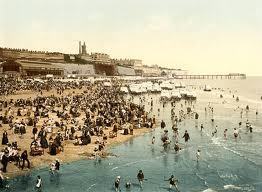
That famous pier! The only thing worth seeing, I think, either in or out of Ramsgate, for you must know I have now seen almost all the lions:—that miserable forlorn Mansion, East Cliff, ci-devant Lord Keith's; the elegant little cake house of Mr Warne, who is going to Russia; the soi-disant cottage of Mr Yarrow, in the romantic vicinity of Pegwell Bay, celebrated, I am told for its fisheries; and last, though certainly not least, the splendid and deserted King's Gate. The building is very classic and elegant, but surely Tully's Villa must be a very different thing in the sweet Campagna of Italy, than placed on such a barren cliff. Poor fellow! Could he look out of the Elysian fields (for there, I suppose, we must place him) I think he would not admire the change of situation!
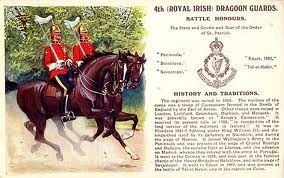
There is a regiment of Irish Dragoons here. The Colonel has just left them to take possession of a large fortune, and another officer has gone to Ireland to give a vote. Both the Irish and Germans have very good bands which often play before our windows etc. this is the only gaiety there is.
I am sure all the pleasure of this place must depend upon the company; when you have society that you like, what spot will not appear pleasant?
We are not too well off in that respect as you will think when I have described our acquaintance.
Our greatest intimate is Lady Jane Pery (1), Lord Limerick's daughter, who has had so many complaints she is unable to move from her chair, though full of life and spirits. Lady Conyngham (2) is the great lady of the place, a nice, civil old woman. We were at a party at her house where we met all the natives. Her daughter, Miss Burton, is 6 ft. 4 in. in height and ugly in proportion, but very agreeable. To-morrow we are going to a party there where we are to meet everybody, for you must know that even in this small society there is an improper set. Lady Dunmore (3) and her daughters, Lady Virginia Murray, and the married one, Lady Susan Drew (4), sisters to the Duchess of Sussex (5) and Lord and Lady Edward Bentinck (6); their two daughters are visited by very few proper people, but both these houses are the rendez-vous of the officers. Lady Sarah Drew had a ball the other night.
At Lady Conyngham's, we are to meet all these.
Miss Bentinck (7) is a great beauty; there has been a long affair between her and Hay Drummond, which is at last broke off by the lady. She had been sent to the Duke of Rutland's to be out of his way. Drummond contrived to introduce himself to the servants as her maid's beau, by which means he slept in the house and was able to walk with her before breakfast and late at night. At last her brother, who was shooting one morning early, and knew Drummond by sight well, found them out and gave the alarm. The Duke sent Miss Bentinck home directly, and they were to be married in September, but lo! she has changed her mind.
1 Cecil-Jane, sixth daughter of the 2nd Baron Glentworth, who was created Viscount and Earl of Limerick in 1803. She married, in 1828, Count John Leopold Ferdinand Casimir de la Feld, a Count of the Holy Roman Empire.
2 Francis Pierrepont-Burton, 2nd Baron Conyngham, who, on inheriting the titles and estates of his uncle, assumed the surname and arms of Conyngham, married, in 1750, the eldest daughter of the Right Hon. Nathaniel Clements, and sister of Robert, Earl of Leitrim. She died in 1814.
3 Lady Charlotte Stewart, daughter of Alexander, 6th Earl of Galloway, married, in 1759, John, 4th Earl of Dunmore.
4 Susan, third daughter of the 4th Earl of Dunmore, married, first, in 1788, Joseph Tharpe, Esq. of Chippenham, Cambridge; secondly, John Drew, Esq.; and thirdly, in 1809, the Rev. A. E. Douglas.
5 Augusta, second daughter of 4th Earl of Dunmore, married, at Rome, the 4th of April 1793, Prince Augustus Frederick, Duke of Sussex, and was re-married to H.R.H. the following December at St George's Church, Hanover Square.
6 Edward Charles, second son of William, 2nd Duke of Portland, and Lady Margaret Cavendish Harley, only daughter and heir of Edward, 2nd Earl of Oxford. Lord Edward Bentinck married Elizabeth, eldest daughter of Richard Cumberland, Esq., and had one son and three daughters. He died in 1819.
7 The three Miss Bentincks were: Harriet, married, 1809, Sir William Mordaunt Sturt Milner, Bart.; Elizabeth, married, 1812, Captain Henry Wyndham; and Charlotte married Major Robert Garrett.
 Ramsgate Sands by Frith 1864
Ramsgate Sands by Frith 1864 From The Letter Bag Lady Elizabtyh Stanhope
Whilst on a visit to Ramsgate, Mrs Stanhope and her party were contenting themselves with whatever gaieties the place afforded, and on May 31st, 1807, Marianne Stanhope sent her brother an interesting account of the conditions prevailing there at that date.
Nelson's Crescent.
Just now I think you would be very miserable here, for the wind is very high and whistles at every corner, the sea is rough and everything looks blowing. The night before last was dreadfully tempestuous, and all yesterday morning was very stormy, but it cleared out, happily for us, in the evening, so that we were able to take a turn on the pier.

That famous pier! The only thing worth seeing, I think, either in or out of Ramsgate, for you must know I have now seen almost all the lions:—that miserable forlorn Mansion, East Cliff, ci-devant Lord Keith's; the elegant little cake house of Mr Warne, who is going to Russia; the soi-disant cottage of Mr Yarrow, in the romantic vicinity of Pegwell Bay, celebrated, I am told for its fisheries; and last, though certainly not least, the splendid and deserted King's Gate. The building is very classic and elegant, but surely Tully's Villa must be a very different thing in the sweet Campagna of Italy, than placed on such a barren cliff. Poor fellow! Could he look out of the Elysian fields (for there, I suppose, we must place him) I think he would not admire the change of situation!

There is a regiment of Irish Dragoons here. The Colonel has just left them to take possession of a large fortune, and another officer has gone to Ireland to give a vote. Both the Irish and Germans have very good bands which often play before our windows etc. this is the only gaiety there is.
I am sure all the pleasure of this place must depend upon the company; when you have society that you like, what spot will not appear pleasant?
We are not too well off in that respect as you will think when I have described our acquaintance.
Our greatest intimate is Lady Jane Pery (1), Lord Limerick's daughter, who has had so many complaints she is unable to move from her chair, though full of life and spirits. Lady Conyngham (2) is the great lady of the place, a nice, civil old woman. We were at a party at her house where we met all the natives. Her daughter, Miss Burton, is 6 ft. 4 in. in height and ugly in proportion, but very agreeable. To-morrow we are going to a party there where we are to meet everybody, for you must know that even in this small society there is an improper set. Lady Dunmore (3) and her daughters, Lady Virginia Murray, and the married one, Lady Susan Drew (4), sisters to the Duchess of Sussex (5) and Lord and Lady Edward Bentinck (6); their two daughters are visited by very few proper people, but both these houses are the rendez-vous of the officers. Lady Sarah Drew had a ball the other night.
At Lady Conyngham's, we are to meet all these.
Miss Bentinck (7) is a great beauty; there has been a long affair between her and Hay Drummond, which is at last broke off by the lady. She had been sent to the Duke of Rutland's to be out of his way. Drummond contrived to introduce himself to the servants as her maid's beau, by which means he slept in the house and was able to walk with her before breakfast and late at night. At last her brother, who was shooting one morning early, and knew Drummond by sight well, found them out and gave the alarm. The Duke sent Miss Bentinck home directly, and they were to be married in September, but lo! she has changed her mind.
1 Cecil-Jane, sixth daughter of the 2nd Baron Glentworth, who was created Viscount and Earl of Limerick in 1803. She married, in 1828, Count John Leopold Ferdinand Casimir de la Feld, a Count of the Holy Roman Empire.
2 Francis Pierrepont-Burton, 2nd Baron Conyngham, who, on inheriting the titles and estates of his uncle, assumed the surname and arms of Conyngham, married, in 1750, the eldest daughter of the Right Hon. Nathaniel Clements, and sister of Robert, Earl of Leitrim. She died in 1814.
3 Lady Charlotte Stewart, daughter of Alexander, 6th Earl of Galloway, married, in 1759, John, 4th Earl of Dunmore.
4 Susan, third daughter of the 4th Earl of Dunmore, married, first, in 1788, Joseph Tharpe, Esq. of Chippenham, Cambridge; secondly, John Drew, Esq.; and thirdly, in 1809, the Rev. A. E. Douglas.
5 Augusta, second daughter of 4th Earl of Dunmore, married, at Rome, the 4th of April 1793, Prince Augustus Frederick, Duke of Sussex, and was re-married to H.R.H. the following December at St George's Church, Hanover Square.
6 Edward Charles, second son of William, 2nd Duke of Portland, and Lady Margaret Cavendish Harley, only daughter and heir of Edward, 2nd Earl of Oxford. Lord Edward Bentinck married Elizabeth, eldest daughter of Richard Cumberland, Esq., and had one son and three daughters. He died in 1819.
7 The three Miss Bentincks were: Harriet, married, 1809, Sir William Mordaunt Sturt Milner, Bart.; Elizabeth, married, 1812, Captain Henry Wyndham; and Charlotte married Major Robert Garrett.
Published on May 31, 2011 01:06
May 30, 2011
Aristocratic Kennels
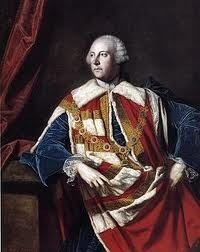 John Russel, 4th Duke of Bedford
John Russel, 4th Duke of BedfordSir Joshua Reynolds
Aristocratic gentlemen have always enjoyed a good hunt, one of the finest being the Oakley Hunt, formed by the 4th Duke of Bedford at Woburn Abbey in 1793.
The Field Book (1833) says: "The Duke of Bedford's is an immense establishment, upon a scale of too great an extent for particular description; as it includes tennis court, riding house, etc., etc. In one stone-fronted building of two hundred and sixty-six feet in length, there are stalls for thirty-six hunters, and eleven loose boxes for sick or lame horses. The kennel is in length four hundred and five feet; having the boiling house in the centre, with feeding rooms adjoining, and a granary behind. On the right of the centre are apartments for two kennel-keepers, two long lodging-rooms for the hunting hounds; with flues running along the wall, to preserve an equal temperature in the severity of the winter season; spacious courts to each, furnished with a fountain in the middle, for the hounds to drink at; and water cocks fixed at proper distances, to cleanse the pavement when it may be required. Adjoining to these, are seven hospitals for sick and lame hounds, with yards to each. On the left, are divisions for litter, straw, and stores of any kind; with eleven apartments for bitches and puppies, and yards to each. There are, also, eleven of a similar description, for bitches in pup; and a large division for bitches at heat. In the front, is a reservoir of water which supplies the fountains and different cocks in the several yards within. Behind the whole, is a large airing ground, flesh-house, and all requisite conveniences. The huntsman's dwelling is a handsome building adjoining. The number of hunting hounds kept in the kennel, is usually from sixty to seventy couples."
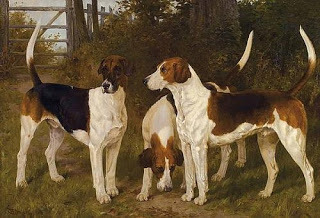 The Oakley Hounds
The Oakley HoundsYet by the end of the eighteenth century, fox-hunting was feeling the pinch of costs. The Napoleonic Wars brought heavy taxes and the Duke of Bedford, with his Oakley hounds, was taxed on an additional twenty-five more servants and twenty-seven more horses on top of an existing twenty-six servants and thirty horses. On March 20th, 1798, the Duke wrote to Samuel Whitbread: 'I will continue my subscription of 500 [pounds sterling] so long as the hounds are kept at Oakley and Mr Pitt leaves me the money'. Difficulties ensued, and in 1809 the Duke of Bedford's eldest son rescued the hunt when the expense of the hounds totalled 2,850 [pounds sterling] per year. 'You will be glad to hear Tavistock has determined to undertake the arduous task,' the Duke wrote on April 4th, 'although it is rather hard on him to exact the sacrifice of half his income for the gratification of a few gentlemen who are unwilling to contribute anything towards their own amusement."
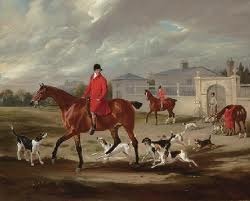 Thomas Goosey and the Belvoir Hounds Leaving the Kennels
Thomas Goosey and the Belvoir Hounds Leaving the KennelsOther titled kennel owners were the Duke of Rutland and the Duke of Richmond. From The Sportsman's Library by John Mills 1845:
"The best constructed kennel, taking it in every point of view, that I have seen, is that belonging to His Grace the Duke of Rutland, at Belvoir Castle; although there are others upon a grander scale.
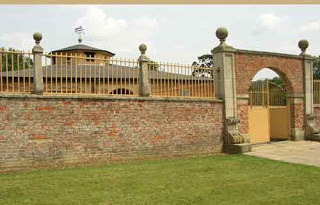 Belvoir Kennels
Belvoir KennelsThe superb edifice of the Duke of Richmond at Goodwood, cost no less a sum than thirteen thousand pounds, in its erection. His Grace was his own architect and builder; and the magnificent design, and the perfection of its arrangements, show how capable he was of accomplishing his task.
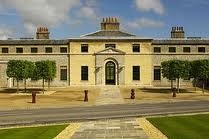 The kennels at Goodwood "The distribution of the building is in five compartments: two of them thirty-six feet by fifteen; and three more, thirty by fifteen. In each of these are openings at the top, for the admission of external air when necessary; and stoves, to qualify the air when too cold. There are supplies of water, and drains into a tank of great depth below, full of rain water; from the surface of which, to the rise of the earth, is eleven feet: so that no unpleasantness arises from stench; and the whole can be occasionally cleared off by drains to more dependent depths and dung pits, where it becomes contributory to the purposes of agriculture. Round the whole pavement, five feet wide, airing yards, places for breeding, and other conveniences make a part of each wing. To produce a uniformity of elegance, neatness, and perfection, the huntsman and whipper-in have each a parlour, kitchen, and sleeping-room, appropriated to their own particular purposes."
The kennels at Goodwood "The distribution of the building is in five compartments: two of them thirty-six feet by fifteen; and three more, thirty by fifteen. In each of these are openings at the top, for the admission of external air when necessary; and stoves, to qualify the air when too cold. There are supplies of water, and drains into a tank of great depth below, full of rain water; from the surface of which, to the rise of the earth, is eleven feet: so that no unpleasantness arises from stench; and the whole can be occasionally cleared off by drains to more dependent depths and dung pits, where it becomes contributory to the purposes of agriculture. Round the whole pavement, five feet wide, airing yards, places for breeding, and other conveniences make a part of each wing. To produce a uniformity of elegance, neatness, and perfection, the huntsman and whipper-in have each a parlour, kitchen, and sleeping-room, appropriated to their own particular purposes."
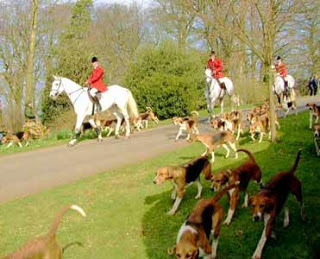 The Belvoir Hunt 2003
The Belvoir Hunt 2003As we have read, owning a working hunt kennel was costly then, and is even costlier now. Edmund Yates, in his book, The Business of Pleasure (1879) put it this way - "In summing-up the question of expense, it will be well to bear in mind the axiom of a well-known sportsman of bygone days, that `a master of hounds will never have his hand out of his pocket, and must always have a guinea in it;' but it may be laid down as a principle that the expense generally depends upon the prudence, experience, and interest possessed by the owner of the pack and the stud. Two men have worked different counties in a season, one at the fourth of the expense incurred by the other, and the difference in sport has been inappreciable. It may, however, be taken as a fact, that the expenses of a fox-hound pack for hunting twice a week, including cost of hounds, horses, huntsmen, and stable-attendants, will be about fifteen hundred; and for three times a week, two thousand pounds."
In our present day, the cost of owning and maintaining a pack is one obstacle - the political climate against hunting is another thing entirely. Still, the hunts, and hunters, hang on. The Oakley Hunt is still going and you can visit their website here. The Duke of Rutland's Belvoir Hunt remains active, as well. Visit their site here. The kennels at Goodwood are now a private members club.
Published on May 30, 2011 00:38
May 28, 2011
Victoria in England 2011
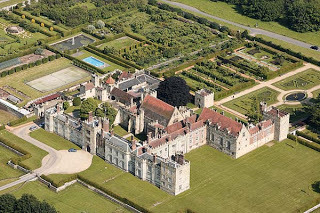 Penshurst Place, Kent
Penshurst Place, KentYes, both Kristine and I confess we are unrepentant when it comes to spending our time and money on trips across the pond to England. Many of you do the same. We work hard to book ourselves into a variety of cities and London neighborhoods, lots of museums and other historic attractions, gardens for wandering, evenings in the theatre or concert hall, and wonderful meals... and, believe it or not, time in libraries and archives. My upcoming two weeks in England will be no different ... castles, stately homes, gardens, museums, several different hotels...and archives at the University of Southampton and Hatfield House.
Upon our arrival in Dover, I hope we can visit Walmer Castle. We "did" Dover Castle a few years ago, and this time, I want to see the Duke of Wellington's home when he was in residence as the Warden of the Cinque Ports, less than ten miles north along the Channel coast.
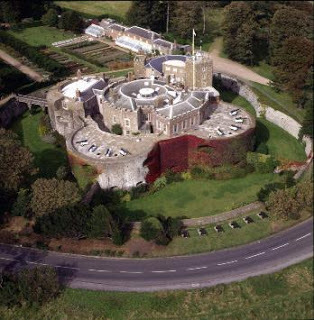
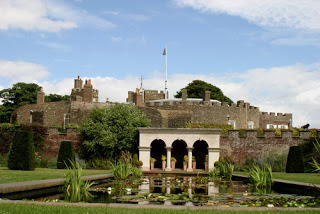
We have a stop planned at Penshurst Place, in which many centuries of British History are enveloped...as well as a great slice of architectural history. And stunning gardens, which I hope will be in full bloom in early June.
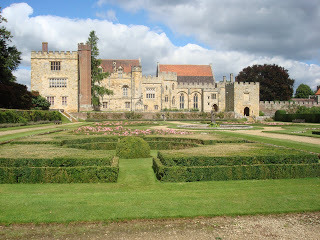
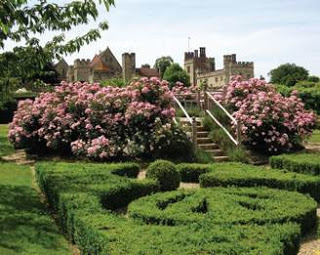
While we are in London, we want to re-visit the Victoria and Albert Museum, this year to see the Cult of Beauty exhibition, which comes highly recommended by Jo Manning and many others.
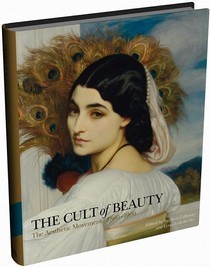
Last year, at the V and A, I enjoyed the Horace Walpole and Strawberry Hill exhibition, in which many of his treasures were reassembled and shown while the house itself was undergoing a thorough renovation. This year, I intend to see the finished house, just a short train ride from London in Twickenham.
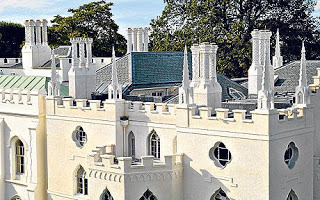
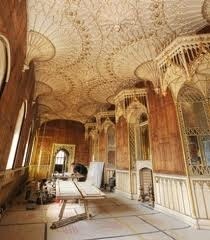
Next I head to Southampton to visit the Archives in Hartley Library at the University of Southampton.
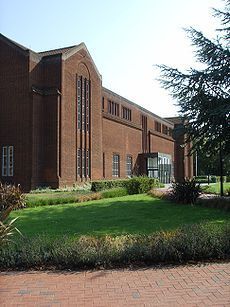
And while I am in town, I will make time to see the sights, though I understand that the house in which Jane Austen once resided is long gone. Parts of the city walls, however, still stand, and the famous port should be interesting to see.
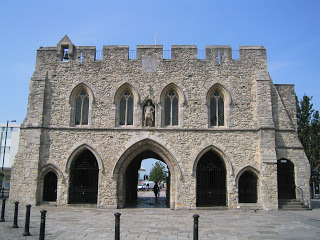
After a short stay in London again, I will go to Hatfield House in Hertfordshire, to study diaries in their Archive. Hatfield has an amazing history and renowned gardens. I wrote about a previous visit to Hatfield on this blog, August 13 2010.
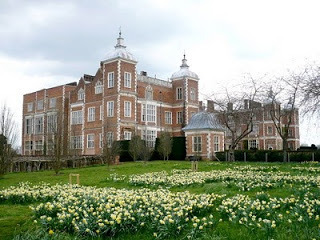
My final stop will be in Windsor, where I will visit the brand new Museum of Windsor and, if the stars are in perfect alignment, visit with our friend Hester Davenport, author of biographies of Mary Robinson and Fanny Burney, and an expert on Windsor history, among other achievements.
Then it will be time to fly home. And start planning the next trip (anticipation is more than half the fun). I will report more fully after I return, and perhaps, along the way.
Published on May 28, 2011 01:13
Kristine Hughes's Blog
- Kristine Hughes's profile
- 6 followers
Kristine Hughes isn't a Goodreads Author
(yet),
but they
do have a blog,
so here are some recent posts imported from
their feed.



